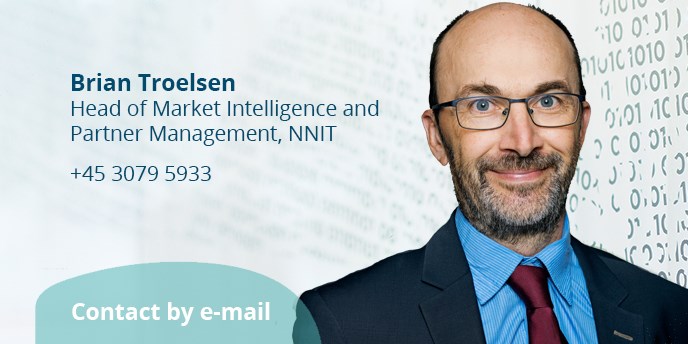Goodbye to one-size-fits-all
According to Brian Troelsen, the hybrid workplace marks the end of the ‘one-size-fits-all’ mindset, in favor of a system where each employee has more say over when and where they work:
“Most managers have realized that we need more flexible and inclusive working models that match individual needs. The hybrid workplace must be able to encompass this,” says Brian Troelsen, noting that the high level of employee influence can be used as an active advantage in the hunt for skilled employees:
“Corona or not: People are changing jobs more often than ever before, and there is no doubt that a flexible working life with a high degree of co-determination helps increase employee retention. In fact, organizations would do well to highlight their flexible working arrangements as part of their value proposition to potential candidates.”
Spot the hidden talent
Skilled IT workers are in short supply, and many companies are currently vying for IT and tech-savvy employees who can help realize digital ambitions and growth goals.
This is confirmed by respondents to this year’s Expectation Barometer. Almost half (41 percent) reported that they are up against moderate or significant challenges due to the lack of IT staff—especially in the fields of data and AI. However, the challenge respondents are facing is not as critical as one might have feared. Brian Troelsen has a possible explanation for this:
“In Denmark, we currently appear to be facing fewer IT challenges than other countries. This is in part because as a relatively prosperous country, we are able to attract employees from abroad. But I think we will be looking at more talent shortages further down the road as the demand for digital transformation accelerates.”
If we examine the responses at industry level, it becomes clear that the financial sector in particular is struggling due to a lack of skilled IT employees:
“That’s no surprise. The products of banks, insurance and pension companies are almost 100 percent digital. They are therefore highly dependent on having competent IT staff skilled in machine learning and other technologies—also when it comes to combatting money laundering.
Although the lack of talented IT staff is widespread, Brian Troelsen is urging recruiters to remember that talent is not only to be found among the pure IT profiles:
“Don’t be afraid to train your current employees in digital skills—especially during times when there is a shortage of candidates, and you find it difficult to recruit the experienced heavyweights. It’s important to spot hidden talent and combine your existing employees’ business and industry knowledge with new digital skills.
Attract talent with your purpose
It is well-known that talented IT workers are not exactly lining up for jobs. But what are the specific reasons why it is difficult to attract skilled employees?
Over a third of respondents (38 percent) highlight their inability to offer a competitive salary and employee benefits as the primary impediment, while a fifth (22 percent) believe their recruitment challenges are due to the fact that the company’s products and solutions are simply not interesting enough.
“Many of us want to work in a company that is driven by a strong purpose. But even if your company cannot identify a strong, clear purpose, remember to find and communicate the many initiatives that make a difference for your customers and society in general,” says Brian Troelsen. He highlights an example of a company with ambitious goals for a sustainable transition:
“Despite their title as a slaughterhouse corporation, Danish Crown aspires to be a frontrunner in sustainable food production. For example, they use IT solutions to ensure they can document their carbon emissions on the farms, how many livestock they produce, their water consumption and much more,” he notes.
“The point is that even though Danish Crown and eating meat are not things we associate with sustainability, they are putting a lot of effort into increasing the sustainability of their operations. And that is a purpose that is worth communicating to the world.”
Read the article: “IT is meant to make Danish Crown’s meat production more climate-friendly”.
Adaptability is vital among digital managers
As most of us prepare to work according to new, digital rules of play in the hybrid workplace, it is natural to ask how a digital manager can promote security and confidence around the new working arrangements, so employees can not only work efficiently, but also achieve a good work-life balance?
“In the hybrid workplace, the line between work and home life becomes partially blurred. Managers should therefore set clear guidelines for working at home: When should employees be available? Are they allowed to take a break in the middle of the day? And which devices should they be contactable on? Clearly aligning expectations prevents burnout and contributes to long-term job satisfaction,” says Brian Troelsen. He notes that leadership will play a crucial role in determining the success of the flexible new work models:
“Adaptability is essential for digital managers, and navigating new and unfamiliar ways of working demands new leadership skills. My clear advice would be to upskill and train managers so that they are equipped to lead teams that work across time and space".

